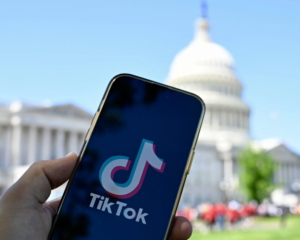Many aspiring influencers think they must “make it big” to be successful on social media. But these days, micro-influencers are dominating the influencer marketing industry. That proves you don’t need millions of followers, just an engaged audience.
Because they have smaller communities, micro-influencers can maintain a closer and more genuine relationship with their followers, which brands see as an asset. That said, becoming a micro-influencer isn’t a walk in the park.
To become a successful micro-influencer, you must find your target audience and niche and identify their needs to provide valuable and relatable content. Becoming a successful influencer takes having a sound strategy, being consistent, and putting in a lot of hard work. These tips can help you get started.
Top Tips for Becoming a Micro-Influencer
The competition is stiff on social media, so taking the first step toward your dream can be intimidating. But there are many ways to set yourself up for success as a micro-influencer.
Identify Your Passion
If you’re a jack of all trades, it’s time to narrow down your interests. Many new influencers fail to gain traction on social media because their content is either too generic or a hodge-podge of everything.
It’s crucial to identify your niche, or what you’re most passionate about. That way, you can focus on related themes and grow a following of like-minded individuals. It’s easier to connect with people when you share something in common with them. The more specific your niche, the better.
Once you find your target audience and niche, it’s time to do extensive research. You’ll talk about your niche non-stop with your audience, so keep expanding your knowledge. It also helps to check out what other influencers in your niche are doing so you can fill in the gaps and address any unmet needs.
Get to Know Your Audience and Choose Your Platforms
Your success as a micro-influencer depends on how well you understand your target audience. You can’t make relevant content if you don’t know what piques your followers’ interest.
Brands love micro-influencers for their highly engaged niche audience, so familiarize yourself with your followers’ likes and dislikes early on. Which topics within your niche do they find the most entertaining or helpful? Which format do they engage with the most? You can start your research by studying your competitors’ followers.
As you learn about your target audience, see which platforms they use the most and prioritize those. Distributing your efforts across multiple platforms will make the process more difficult. Focus on one or two platforms and tailor a strategy for each one.
Post Consistently and Engage With Your Audience
If you’ve been dreaming of becoming an influencer, you’ve probably heard about how you must post consistently. It’s one of the key ingredients to success on social media. But posting every day without a plan isn’t sustainable.
That’s where a content strategy comes in handy. Develop your ideas and style, plot your schedule, and create your posts beforehand. That will help you post high-quality content consistently. You won’t run out of topics to post about if you’ve already planned everything out.
In addition to posting consistently, maximize your posts’ performance by engaging with your audience. Reply to comments, participate in friendly banter, and ask for their feedback. When others see you taking the time to engage with your followers, they will likely drop a comment, too.
Connect With Brands Within Your Niche
There are many ways you can be successful in your niche, including through affiliate marketing and brand partnerships. But how do you get brands to pick you over the sea of other influencers in your niche? Stand out from the competition by identifying value propositions you can offer companies. How will they benefit if they work with you? Here are some value propositions you can highlight in your portfolio:
Audience demographics: Provide insights into your audience, including age, location, gender, and interests. Brands will be more willing to work with you if you share the same target audience. Any data from past affiliate marketing campaigns can prove to brands what kind of audience makes purchases through your links.
Engagement rate: Companies tap micro-influencers for their impressive engagement rates. Highlight your engagement metrics to give brands an idea of the exposure you can provide them.
Content samples: Brands want to know if your style aligns with theirs. Show them samples of your work and the formats you’ve used. That will help showcase your creativity and skills.
Authenticity: Companies want to work with micro-influencers with a genuine bond with their followers. Show comments and messages from your audience to give a glimpse into your relationship with them.
Converting content: If you promote products using affiliate marketing links (like Mavely SmartLinks), you can show brands with hard data that your audience buys their products when you promote them.
What Is a Micro-Influencer?
Micro-influencers are social media users who promote brands, products, and services. However, their content revolves around specific themes, and they cater to a niche audience.
Here are some tasks micro-influencers do regularly:
Create valuable and engaging content for their audience
Track performance through social media analytics and platforms with robust analytics like Mavely
Improve their content strategy to keep up with algorithm changes and boost performance
Partner with brands to endorse products and services through various campaigns (independently or through a platform like Mavely)
Find other avenues of income like selling merchandise and affiliate marketing
Micro Versus Macro-Influencers
Micro-influencers have 10,000 to 100,000 followers. You need more than 100,000 to 1 million followers to be in the macro-influencer category. There are also nano influencers who have between 1,000 and 10,000 followers.
The best benefit of working as a micro-influencer is the intimate relationship you build with your followers. It’s hard for macro-influencers to get close and personal with theirs because they have such a large audience. With a smaller community, you can pay closer attention to your audience and make your followers feel seen and heard. That results in a significant engagement boost.
Micro-influencers also usually have specific niches and attract a highly targeted audience. That’s an advantage for brands because they can tap a particular group of interested people. They can get their products and services in front of the right consumers who are likely to purchase.
The Benefits of Micro-Influencers
Becoming a micro-influencer can be a rewarding career. Your followers see you as an industry expert, and you can build genuine connections with your audience. But what do brands gain from collaborating with micro-influencers, given their smaller audiences? These are some of the benefits companies can enjoy when they tap micro-influencers:
Cost-Effectiveness
Influencers get paid based on the number of followers they have. That means brands shell out big bucks to work with macro-influencers and celebrities. Micro-influencers are a more cost-effective alternative. Companies get to expand their reach for a fraction of the price with the assurance that they’re tapping their target audience.
In addition, micro-influencers are working to build their network of partner brands. That means they’re usually extra attentive to companies’ needs to build a long-term relationship. Brands get more value for their money.
Credibility
More consumers are experiencing fatigue as they get bombarded with intrusive and salesy ads on social media. Micro-influencers can help brands present their products and services in a more authentic way. In addition, they partner with brands that align with their values, and their audience knows that.
When micro-influencers endorse something, their followers trust that they’ve tried it for themselves and genuinely like it. That allows brands to gain credibility across a wider audience.
Engagement and Sales
Companies work with macro-influencers because of the impressive reach they offer. But for brands that are more concerned about engagement and conversion than reach, micro-influencers can provide the desired results. Because they have the trust of their audience, micro-influencers typically get more engagement on posts.
This performance-based approach to influencer marketing helps brands see what’s actually working to drive sales. With transparent data that shows exactly how many sales a particular influencer is driving, platforms like Mavely help prove out your value to a brand partner.
Targeting
Macro-influencers and celebrities attract thousands and millions of followers from all walks of life. Meanwhile, micro-influencers have a smaller but more curated following. They have specific interests and attract like-minded followers. That allows brands to execute a high level of targeting that’s impossible with macro-influencers.
By working with micro-influencers, companies can tap a specific audience that’s already interested and ready to engage. It’s a calculated move that can bring in impressive gains.
Multi-Audience Reach
One campaign with a macro-influencer or celebrity can take up a brand’s entire influencer marketing budget. But with micro-influencers, companies can use their budget to partner with several others and reach different market segments. Brands can collaborate with micro-influencers of different ages, locations, and genders to tap various niche audiences.
This strategy can result in higher reach and engagement. It’s an opportunity for brands to identify and tap curated audiences they would otherwise miss by working exclusively with one macro-influencer.
Become a Successful Micro-Influencer in 2024
If you’re wondering how to become a micro-influencer in 2024, having a sound content strategy goes a long way. The first step is to determine your niche and target audience. That will guide the rest of your decisions. Develop a deep understanding of your audience, create high-quality and engaging content, and follow a consistent posting schedule. With a well-thought-out plan, you can stand out from the competition.
Mavely Can Help You Grow Your Profit as a Micro-Influencer
If you’re ready to monetize your social media profiles, sign up for Mavely. Mavely is a completely free platform for influencers that allows you to partner with thousands of brands, including those who want to work with micro-influencers. With your free Mavely profile, you get access to real-time analytics, account managers, and creator courses. Sign up for Mavely today!







